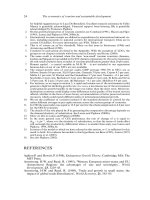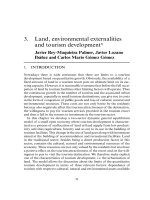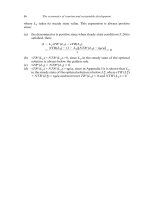THE ECONOMICS OF MONEY,BANKING, AND FINANCIAL MARKETS 154
Bạn đang xem bản rút gọn của tài liệu. Xem và tải ngay bản đầy đủ của tài liệu tại đây (32.8 KB, 1 trang )
122
PA R T I I
Financial Markets
period so that the average short-term interest rate over the coming 20 years is
11%, then the interest rate on 20-year bonds would equal 11% and would be
higher than the interest rate on five-year bonds. We can see that the explanation provided by the expectations theory for why interest rates on bonds of different maturities differ is that short-term interest rates are expected to have
different values at future dates.
The key assumption behind this theory is that buyers of bonds do not prefer
bonds of one maturity over another, so they will not hold any quantity of a bond
if its expected return is less than that of another bond with a different maturity.
Bonds that have this characteristic are said to be perfect substitutes. What this
means in practice is that if bonds with different maturities are perfect substitutes,
the expected return on these bonds must be equal.
To see how the assumption that bonds with different maturities are perfect substitutes leads to the expectations theory, let us consider the following two investment strategies:
1. Purchase a one-year bond, and when it matures in one year, purchase another
one-year bond.
2. Purchase a two-year bond and hold it until maturity.
Because both strategies must have the same expected return if people are holding both one- and two-year bonds, the interest rate on the two-year bond must
equal the average of the two one-year interest rates.
APP LI CAT IO N
Expectations Theory
The current interest rate on a one-year bond is 9%, and you expect the interest
rate on the one-year bond next year to be 11%. What is the expected return over
the two years? What interest rate must a two-year bond have to equal the two oneyear bonds?
Solution
The expected return over the two years will average 10% per year ([9% + 11%]/2 *
10%). The bondholder will be willing to hold both the one- and two-year bonds only
if the expected return per year of the two-year bond equals 10%. Therefore, the
interest rate on the two-year bond must equal 10%, the average interest rate on the
two one-year bonds. Graphically, we have:
Today
0
Year
1
9%
Year
2
11%
10%









